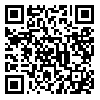Volume 13, Issue 3 (12-2014)
jhosp 2014, 13(3): 9-15 |
Back to browse issues page
Download citation:
BibTeX | RIS | EndNote | Medlars | ProCite | Reference Manager | RefWorks
Send citation to:



BibTeX | RIS | EndNote | Medlars | ProCite | Reference Manager | RefWorks
Send citation to:
Salimifard K, Keshtkar L, Moradi M. Improving Emergency Department Performance Using Simulation. jhosp 2014; 13 (3) :9-15
URL: http://jhosp.tums.ac.ir/article-1-5059-en.html
URL: http://jhosp.tums.ac.ir/article-1-5059-en.html
1- Persian Gulf University , salimifard@pgu.ac.ir
2- Persian Gulf University
2- Persian Gulf University
Abstract: (10837 Views)
Background: Emergency department performance can be evaluated in quantitative and qualitative criteria. Some quantitative criteria are considered such as length of stay, patient waiting time, the percentage of patients that treat in a specific time and etc. In this paper the performance of emergency department was evaluated in terms of these criteria. Then four scenarios by using simulations was proposed.
Materials & Methods: patient flow was modeled by discrete event simulation (DES) and the simulation was done by Arena software. Data was gathered randomly and patient waiting time, length of stay and the percentage of patients by noticing 6-hour boarding limit for EDs were performance criteria.
Result: The result show 70% of patients were hospitalized in ED over 6 hours and it is an important bottleneck. The fourth scenario is that best of the scenarios, that improve in waiting times for hospital admission (85%), total waiting time before hospitalization (63%) and the percentage of the beds utilization (15%).
Conclusion: the findings of this paper show that the fourth scenario has greatest improve in the process. In this scenario, to reduce waiting times for patients admitted to the emergency department as well as to reduce the high percentage of occupied beds, 3 beds and 1 nurse were added.
Type of Study: Original Article |
Subject:
کیفیت خدمات و ایمنی بیمار در بیمارستان
Received: 2013/08/8 | Accepted: 2014/05/24 | Published: 2014/11/28
Received: 2013/08/8 | Accepted: 2014/05/24 | Published: 2014/11/28
Send email to the article author
| Rights and permissions | |
 |
This work is licensed under a Creative Commons Attribution-NonCommercial 4.0 International License. |





